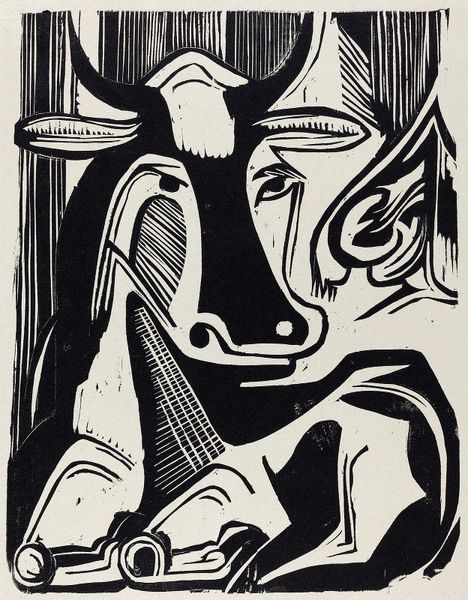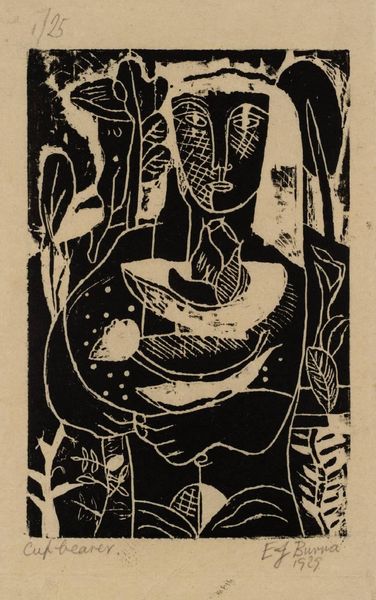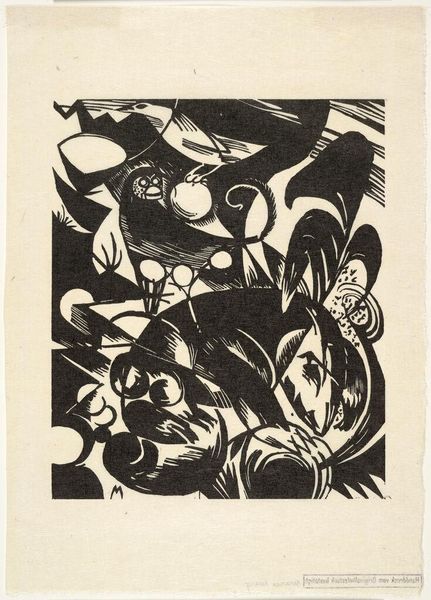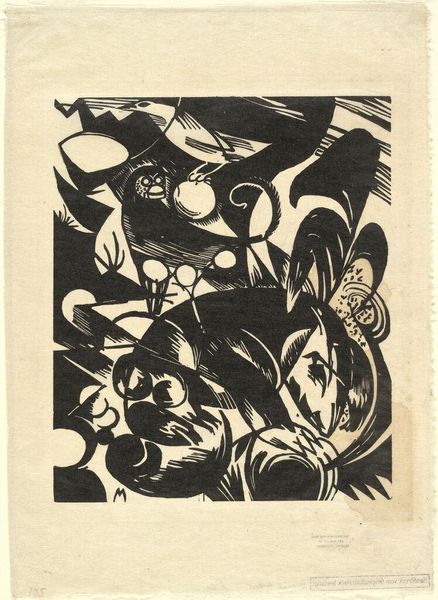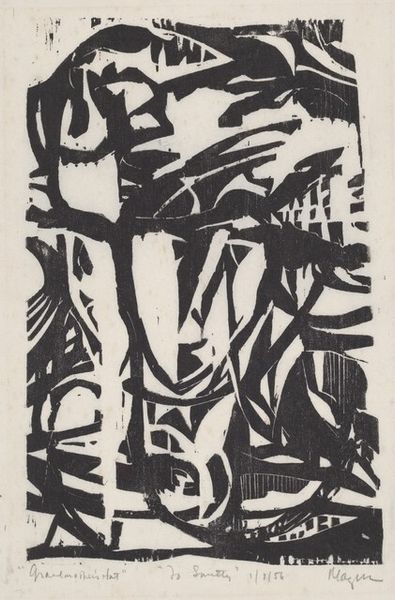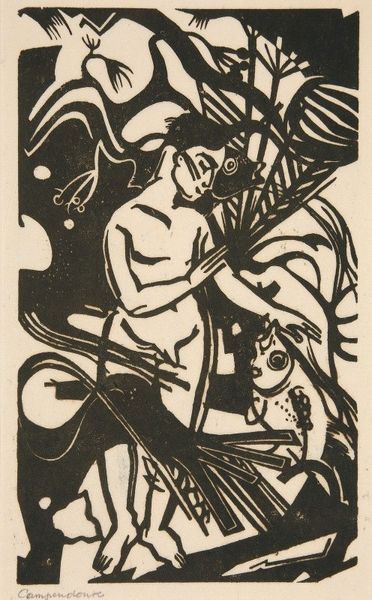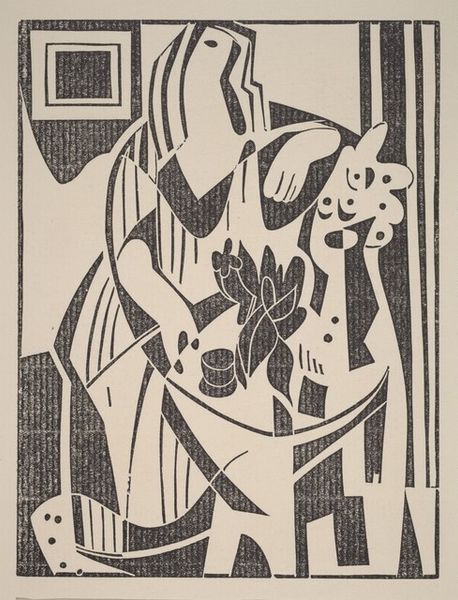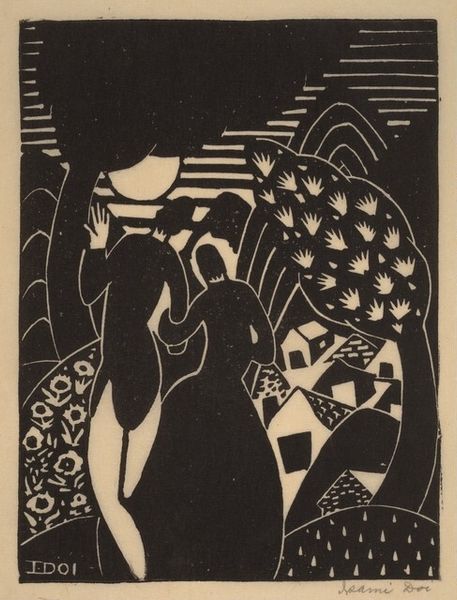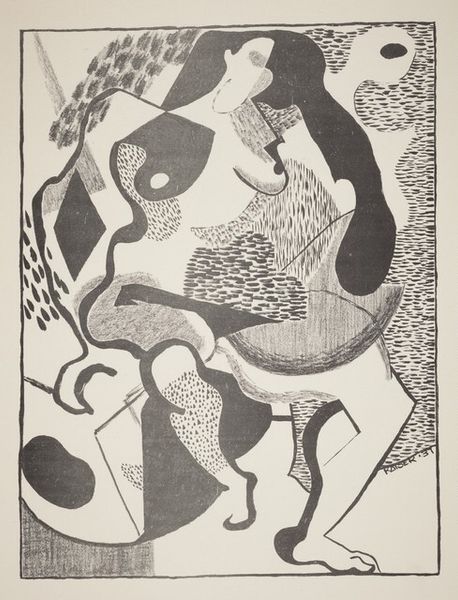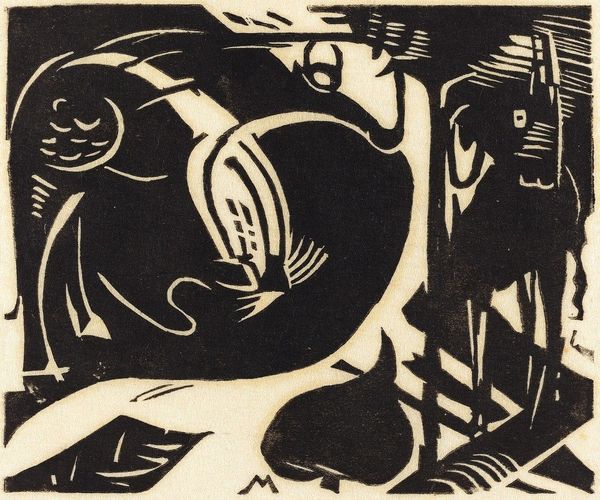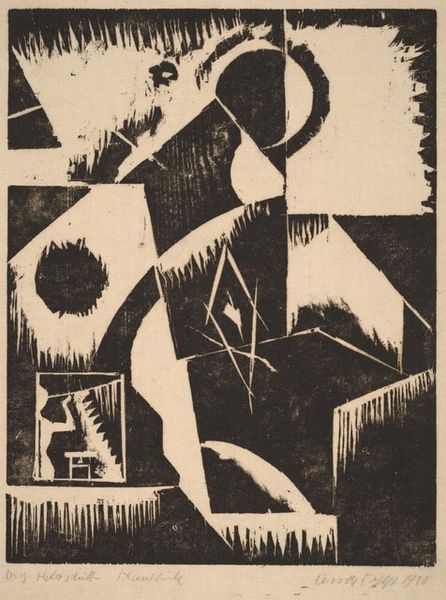
Copyright: Public Domain: Artvee
Editor: We're looking at "Stilleben mit Plastik," a 1925 woodcut by Ernst Ludwig Kirchner. It’s a powerful black and white image. There’s a female nude figure, almost statuesque, juxtaposed with a vase of flowers. The composition feels very confrontational, almost challenging. What do you see in this piece? Curator: I see Kirchner grappling with the evolving role of art amidst significant social change. He lived through a World War. Woodcuts were readily circulated and had a very powerful position in social critique and disseminating news to the masses. The starkness, the high contrast—it’s not just aesthetic; it reflects a world fractured by conflict and rapidly shifting cultural values. The "plastic" in the title – likely a sculpture – implies art reflecting on itself in the face of industry and modernism. Does the positioning of the nude beside the flowers strike you as intentionally symbolic? Editor: I guess so. It’s hard to ignore, the stark juxtaposition is intentional. Is it fair to interpret the figure as representative of traditional art, challenged by the new industrialised forms represented by the sculpture and abstracted still life elements? Curator: That's definitely one compelling interpretation. Kirchner's work often explores the tension between traditional artistic values and the disruptive forces of modernity. How do you think the choice of a woodcut, a medium with roots in folk art, influences that reading? Editor: Good point, the very process speaks to tradition. Seeing how the choice of materials links back to that cultural history makes the artwork feel so much richer. Curator: Exactly. So much of modern art stems from this search. The past in dialogue with a rapidly changing present and uncertain future. Editor: Thanks! I’ll be on the lookout for other examples of that dialogue.
Comments
No comments
Be the first to comment and join the conversation on the ultimate creative platform.
